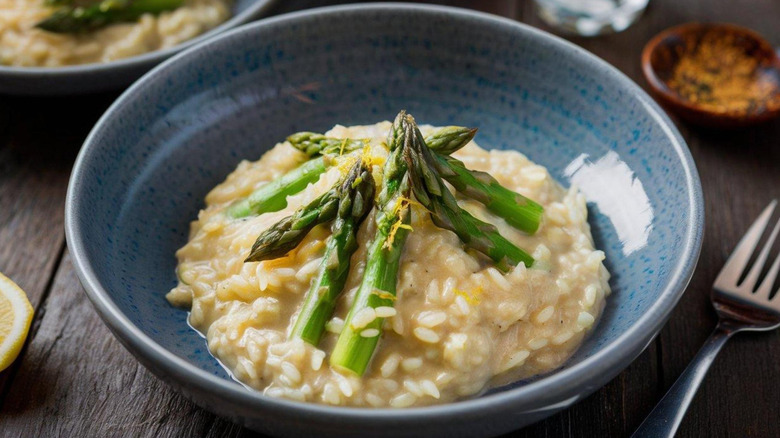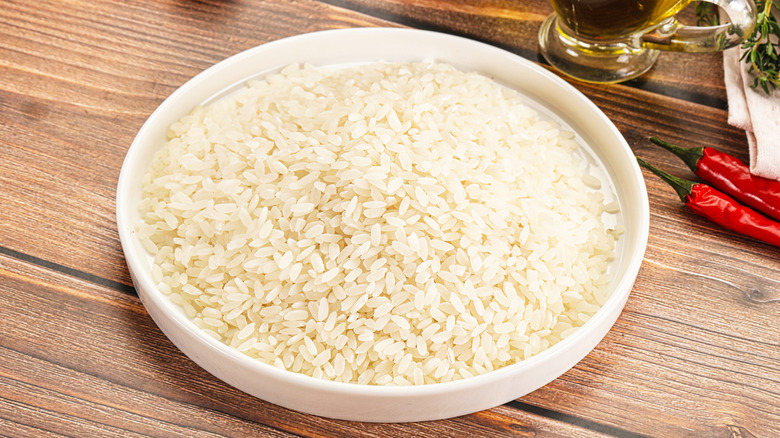For A Creamy Risotto, Avoid This Common Preparation Step
At its absolute best, risotto is creamy and luscious, which is why there are so many fans of this regional Italian food. But there's an art to getting it to the point of perfection. For those of you who prepare rice often, one aspect of the preparation might go against what many of you are initially taught. We spoke to Jessica Montanelli, Tuscan-born Italian food blogger at Cooking My Dreams, who gave us some advice on how to make the creamiest risotto.
"You should never rinse rice for risotto," Montanelli told The Takeout. This may come as a shock, but it's actually detrimental to the dish. "Starch plays a very important role in making the risotto creamy. If you rinse the rice, you'll never get the right risotto consistency," Montanelli explained.
I was raised in a household where you always rinsed off rice before cooking, no questions asked, so this runs counterintuitively to my personal instincts. However, when you wash that starch away, you're losing the very glue that holds the grains together in the end. In this case, you're not looking for pieces that easily separate from one another once cooked. You actually want the powdery excess starch that will eventually absorb liquid, creating that silky texture around each grain.
How to make proper risotto
Because you're after a specific texture, you can't make risotto using just any white rice. "The best rice for risotto are Arborio, Carnaroli, and Vialone Nano," Jessica Montanelli advised. "They have small, round grains and higher starch content compared to other varieties."
In terms of technique, Montanelli said that you should never skip toasting the rice at the beginning of the process before adding any liquid, which is commonly noted in many recipes. "This will help the grains retain their consistency while cooking," she explained, adding, "It's also very important to cook slowly, adding the broth a little bit at a time." Finally, she suggested waiting until the very end of the cooking process to add butter and freshly grated parmesan cheese — stir these ingredients in with the heat turned off.
We've got a clever recipe (if we do say so ourselves) for a cheeky Wisconsin-style risotto that combines Italian technique with Midwestern flavor. Armed with the proper knowledge of how to choose rice, treat the raw grains, and cook the risotto, you'll be able to pull off the best version of this dish — even if it's not exactly traditional.

